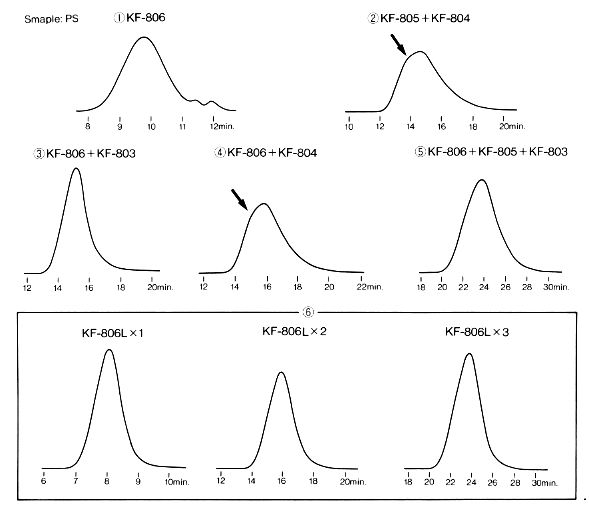Column Connection and Linear Type Columns
Chromatograms (1) to (5) show the results of analysis for the same polystyrene sample using different columns. A single column is used for (1), two different columns are used for (2) (KF-805 + KF-804), (3) (KF-806 + KF-803) and (4) (KF-806 + KF-804) and three different columns are used for (5) (KF-806 + KF-805 + KF-803). One problem was found from the results that the peak patterns were different from each other in spite of the fact that the sample is the same. Another problem is that a shoulder was found in the peak pattern. In the case of (2) and (4), apparent shoulders can be found at the points shown with the arrow. These shoulders are generated when different columns are connected in series and their calibration curves are not straight. In order to solve the above problem, linear type columns were developed. Linear type columns packed with mixed gel, which is a mixture of different pore size, is recommended. Since the ratio of gels in the mixture is carefully chosen to realize a straight calibration curve for a wide molecular weight range, it is possible to obtain a same elution pattern at any time. For better separation, the use of two or three linear column types in series is recommended. Refer to chromatogram (6) (KF-806L).

Sample : PS, Polystyrene
Columns : Shodex GPC KF-800, KF-800L series (8.0mmID*300mm each) Eluent : THF Flow rate : 1.0mL/min